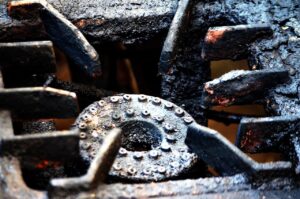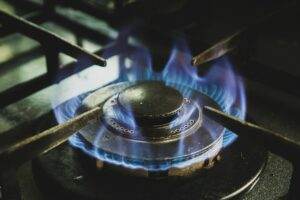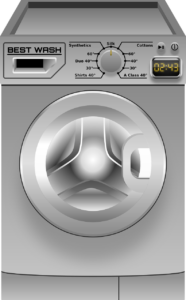1. Introduction: Understanding Burner Control Breakdowns
Burner control systems are an essential component in various industries, including manufacturing, power generation, and heating. These systems are responsible for regulating the fuel and air mixture in burners to ensure efficient combustion and safe operation. However, like any mechanical system, burner control systems can experience breakdowns, which can lead to decreased performance and potential safety hazards.
A burner control breakdown occurs when the system fails to properly regulate the fuel and air mixture, resulting in irregular flame patterns, excessive soot, or unusual noises. These breakdowns can be caused by a variety of factors, including faulty wiring, sensor malfunctions, or clogged filters. Understanding the signs and causes of burner control breakdowns is crucial in preventing further damage and ensuring the safety of the system.
2. Signs of Burner Control Breakdowns: Common Symptoms to Watch Out For
There are several common symptoms that indicate a burner control breakdown. One of the most noticeable signs is irregular flame patterns. A properly functioning burner should have a steady and consistent flame. If you notice flickering flames or flames that are too large or too small, it may indicate a problem with the burner control system.
Excessive soot is another symptom of a burner control breakdown. Soot is a byproduct of incomplete combustion and can accumulate on burners and heat exchangers. If you notice a buildup of soot on your burners or if you see black smoke coming from your exhaust stack, it may indicate that the fuel and air mixture is not being properly regulated.
Unusual noises coming from the burner can also be a sign of a burner control breakdown. If you hear banging, popping, or rumbling noises when the burner is operating, it may indicate that the fuel and air mixture is not being properly ignited.
These symptoms can affect the performance of the burner and the safety of the system. Irregular flame patterns can lead to inefficient combustion, resulting in decreased energy efficiency and increased fuel consumption. Excessive soot can reduce the heat transfer efficiency of the system, leading to decreased performance and potential damage to the heat exchanger. Unusual noises can indicate a problem with the ignition system, which can lead to delayed ignition or complete failure to ignite, potentially causing a dangerous buildup of fuel.
3. Causes of Burner Control Breakdowns: Identifying the Root of the Problem
There are several factors that can cause burner control breakdowns. One common cause is faulty wiring. Over time, the wiring in a burner control system can become damaged or loose, leading to intermittent connections or complete failure. This can result in a loss of control over the fuel and air mixture, leading to irregular flame patterns or failure to ignite.
Sensor malfunctions are another common cause of burner control breakdowns. Burner control systems rely on various sensors, such as flame sensors and temperature sensors, to monitor the combustion process and make adjustments as needed. If these sensors become dirty or damaged, they may provide inaccurate readings or fail to function altogether, leading to improper regulation of the fuel and air mixture.
Clogged filters can also cause burner control breakdowns. Burner control systems often have filters that remove impurities from the fuel or air supply. If these filters become clogged with dirt or debris, it can restrict the flow of fuel or air, leading to inefficient combustion and potential damage to the system.
Identifying the root cause of a burner control breakdown is crucial in preventing future breakdowns. By addressing the underlying issue, you can ensure that the system is functioning properly and prevent further damage or safety hazards.
4. Types of Burner Control Systems: Understanding the Different Types of Controls
There are several different types of burner control systems, each with its own advantages and disadvantages. The most basic type of control is an on/off control. This type of control simply turns the burner on or off based on a set temperature or pressure. While on/off controls are simple and reliable, they do not provide precise control over the fuel and air mixture, which can lead to inefficient combustion and increased fuel consumption.
Modulating controls are another type of burner control system. These controls continuously adjust the fuel and air mixture based on the demand for heat. This allows for more precise control over the combustion process, resulting in increased energy efficiency and reduced fuel consumption. However, modulating controls can be more complex and expensive to install and maintain.
High/low controls are a combination of on/off and modulating controls. These controls have two firing rates: a high firing rate for maximum heat output and a low firing rate for reduced heat output. This allows for more flexibility in meeting varying heat demands while still providing efficient combustion. However, high/low controls can be more complex to install and maintain compared to on/off controls.
Understanding the different types of burner control systems can help you choose the right system for your needs and ensure optimal performance and efficiency.
5. Common Components of Burner Control Systems: What to Look for When Diagnosing Breakdowns
Burner control systems consist of several common components that work together to regulate the fuel and air mixture. Understanding these components and how they function can help you diagnose problems when a breakdown occurs.
One common component is the flame sensor. The flame sensor is responsible for detecting the presence of a flame and providing feedback to the control system. If the flame sensor becomes dirty or damaged, it may fail to detect the flame or provide inaccurate readings, leading to improper regulation of the fuel and air mixture.
Another common component is the ignition transformer. The ignition transformer provides high voltage electricity to ignite the fuel and air mixture. If the ignition transformer fails, it may result in delayed ignition or complete failure to ignite, leading to a dangerous buildup of fuel.
Pressure switches are another important component of burner control systems. These switches monitor the pressure in the fuel or air supply and provide feedback to the control system. If the pressure switches become faulty or fail, it may result in improper regulation of the fuel and air mixture, leading to inefficient combustion or failure to ignite.
Other common components include solenoid valves, which control the flow of fuel or air, and control boards, which receive input from sensors and make adjustments to the fuel and air mixture. Diagnosing problems with these components requires a thorough understanding of how they function and how to test them.
6. Troubleshooting Burner Control Systems: Step-by-Step Guide to Diagnosing the Problem
When a burner control breakdown occurs, it is important to troubleshoot the system to identify the root cause of the problem. Here is a step-by-step guide to troubleshooting burner control systems:
1. Start by visually inspecting the system for any obvious signs of damage or loose connections. Check for loose wires, damaged components, or clogged filters.
2. Test the power supply to ensure that the system is receiving the correct voltage. Use a multimeter to measure the voltage at various points in the system.
3. Test the flame sensor by cleaning it with a soft brush or cloth. If cleaning does not resolve the issue, use a multimeter to test for continuity.
4. Test the ignition transformer by checking for voltage output using a multimeter. If there is no voltage output, it may indicate a faulty transformer that needs to be replaced.
5. Test the pressure switches by checking for continuity using a multimeter. If there is no continuity, it may indicate a faulty switch that needs to be replaced.
6. Test other components, such as solenoid valves and control boards, as needed based on the specific symptoms and system configuration.
7. Once you have identified the root cause of the problem, take appropriate steps to repair or replace the faulty component. This may involve cleaning, tightening connections, or replacing the component altogether.
It is important to note that troubleshooting burner control systems can be complex and potentially dangerous. If you are not familiar with the system or do not have the necessary skills and tools, it is best to seek professional assistance.
7. Burner Control Maintenance: Preventing Breakdowns Before They Happen
Regular maintenance is crucial in preventing burner control breakdowns and ensuring optimal performance and safety. Here are some tips on how to maintain burner control systems:
1. Clean or replace filters regularly to prevent clogs and ensure proper fuel or air flow. Follow manufacturer instructions for cleaning or replacing filters.
2. Inspect wiring for any signs of damage or loose connections. Tighten connections as needed and replace any damaged wiring.
3. Clean flame sensors regularly to remove any dirt or debris that may interfere with their function. Use a soft brush or cloth to gently clean the sensor.
4. Check and clean burners and heat exchangers to remove any soot or debris that may reduce heat transfer efficiency. Follow manufacturer instructions for cleaning these components.
5. Test pressure switches and other components regularly to ensure they are functioning properly. Use a multimeter to check for continuity or voltage output as needed.
6. Keep the area around the burner clean and free from any flammable materials. Ensure proper ventilation to prevent the buildup of combustible gases.
By following these maintenance tips, you can prevent breakdowns before they happen and ensure that your burner control system is operating at its best.
8. Repairing Burner Control Systems: DIY vs. Professional Assistance
When a burner control breakdown occurs, you may be tempted to attempt DIY repairs to save time and money. While some minor issues can be resolved with basic troubleshooting and repairs, it is important to know when it is appropriate to seek professional assistance.
DIY repairs can be appropriate for simple issues, such as loose connections or dirty sensors. These repairs typically involve basic tools and skills and can be done safely with proper precautions. However, if the issue is more complex or involves electrical components, it is best to leave the repairs to a professional.
Attempting DIY repairs on complex burner control systems can be dangerous and may result in further damage or safety hazards. Working with high voltage electricity or complex control boards requires specialized knowledge and tools that most homeowners or maintenance personnel do not possess. Additionally, attempting repairs without proper training or experience can void warranties or insurance coverage.
Hiring a professional to repair your burner control system ensures that the issue is properly diagnosed and resolved. Professionals have the knowledge, skills, and tools to safely repair or replace faulty components and ensure that the system is functioning properly. They can also provide valuable advice on maintenance and preventive measures to avoid future breakdowns.
9. Replacing Burner Control Systems: When to Consider a Replacement
In some cases, it may be necessary to consider replacing a burner control system rather than attempting repairs. There are several situations where replacement may be appropriate:
1. Outdated system: If your burner control system is outdated and no longer meets current safety or efficiency standards, it may be time to consider a replacement. Newer systems often have advanced features that can improve performance and reduce fuel consumption.
2. Irreparable damage: If the burner control system has suffered irreparable damage, such as a major electrical failure or extensive corrosion, it may be more cost-effective to replace the entire system rather than attempting repairs.
3. Inefficient performance: If the burner control system is consistently underperforming or failing to meet your heating demands, it may be worth considering a replacement. Newer systems often have improved efficiency and better control over the fuel and air mixture.
When choosing a replacement burner control system, consider factors such as compatibility with your existing equipment, energy efficiency ratings, and safety features. It is also important to ensure that the replacement system is installed properly to avoid further breakdowns or safety hazards.
10. Safety Precautions When Working with Burner Control Systems: Protecting Yourself and Your Property
Working with burner control systems can be potentially dangerous, so it is important to take proper safety precautions to protect yourself and your property. Here are some safety precautions to keep in mind:
1. Wear appropriate protective gear, such as gloves, safety glasses, and flame-resistant clothing, when working with burner control systems. This will help protect you from burns, electrical shocks, and other hazards.
2. Turn off all power sources before working on the system. This includes shutting off the main power supply and disconnecting any batteries or backup power sources.
3. Follow manufacturer instructions and guidelines when working on the system. This includes proper installation, maintenance, and troubleshooting procedures.
4. Use proper tools and equipment for the job. Using the wrong tools or equipment can lead to accidents or damage to the system.
5. Work in a well-ventilated area to prevent the buildup of combustible gases. If working in an enclosed space, ensure proper ventilation or use appropriate respiratory protection.
6. Keep a fire extinguisher nearby in case of emergencies. Make sure it is properly maintained and easily accessible.
By following these safety precautions, you can minimize the risks involved in working with burner control systems and ensure a safe working environment.
11. Conclusion: Keeping Your Burner Control Systems Running Smoothly
Burner control systems are an essential component in various industries, ensuring efficient combustion and safe operation of burners. Understanding the signs and causes of burner control breakdowns is crucial in preventing further damage and ensuring the safety of the system.
By regularly maintaining your burner control system, you can prevent breakdowns before they happen and ensure optimal performance and efficiency. However, when breakdowns do occur, it is important to troubleshoot the system properly and know when to seek professional assistance.
By following proper safety precautions and taking appropriate steps to repair or replace faulty components, you can keep your burner control system running smoothly and ensure the safety of yourself and your property.



